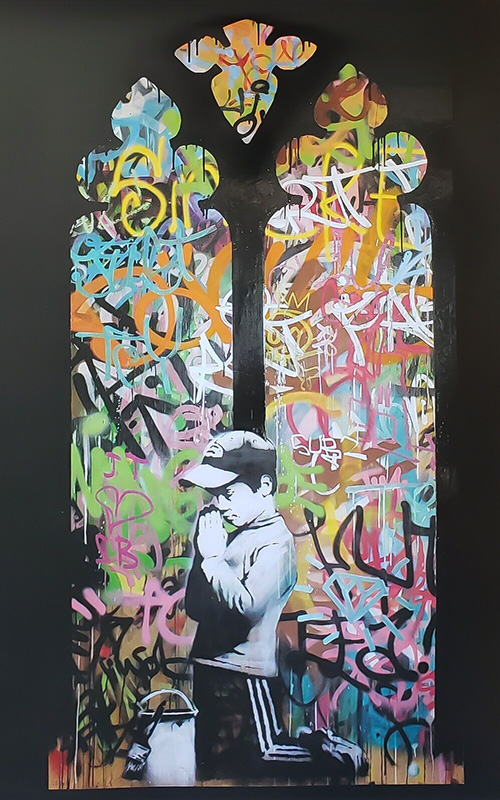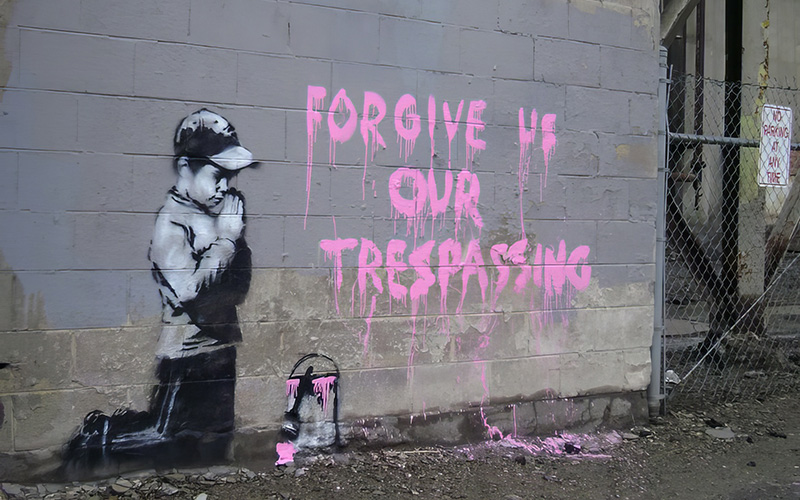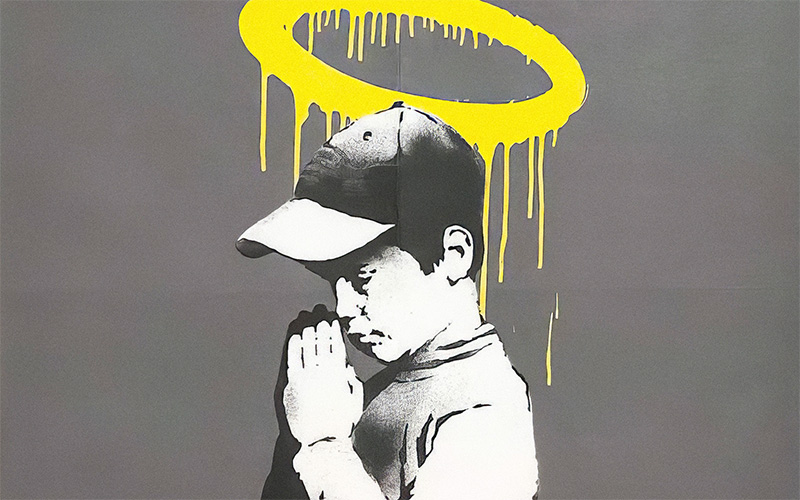


Forgive Us Our Trespassing first appeared as a simpler version in the year of 2010 in Salt Lake City, showing a boy kneeling in prayer beside a paint can and brush, with the stentence „Forgive us our trespassing“ smeared across the wall beside him. The image, used to promote Banksy’s film Exit Through the Gift Shop, symbolized graffiti as both vandalism and art seeking understanding. In 2011, Banksy expanded the work into a monumental 7-meter mural for MOCA’s Art in the Streets exhibition in Los Angeles. Created on wooden panels, it combined a cathedral-like stained glass design with graffiti tags contributed by over 100 students, framing the boy’s penitence against a backdrop of chaotic color. The piece reflects themes of innocence, rebellion, and redemption, recasting trespass as a spiritual act of expression. In 2020, it sold at Sotheby’s Hong Kong for around USD 8.2 million, cementing its place as one of Banksy’s most iconic works.
Forgive Us Our Trespassing erschien erstmals als simplere Version ohne Kirchenfenster im Jahr 2010 in Salt Lake City und zeigte einen betenden Jungen neben einem rosa Farbeimer mit dem Satz „Forgive us our trespassing“ an der Wand. Das Bild, das auch zur Promotion von Banksys Film Exit Through the Gift Shop verwendet wurde, symbolisierte Graffiti zugleich als Vandalismus und als Kunst, die nach Verständnis sucht. 2011 erweiterte Banksy das Werk zu einem monumentalen, sieben Meter hohen Wandbild für die Ausstellung Art in the Streets im MOCA in Los Angeles. Geschaffen auf Holztafeln, verband es ein kathedralenähnliches Glasfenster-Design mit Graffiti-Tags von über 100 Schülern und stellte die gebeugte Figur des Jungen vor einen Hintergrund chaotischer Farben. Das Werk reflektiert Themen wie Unschuld, Rebellion und Erlösung und deutet das „Tresspassing“ als spirituellen Akt des Ausdrucks um. 2020 wurde es bei Sotheby’s in Hongkong für rund 8,2 Millionen US-Dollar versteigert und gilt seither als eines von Banksys ikonischsten Werken.